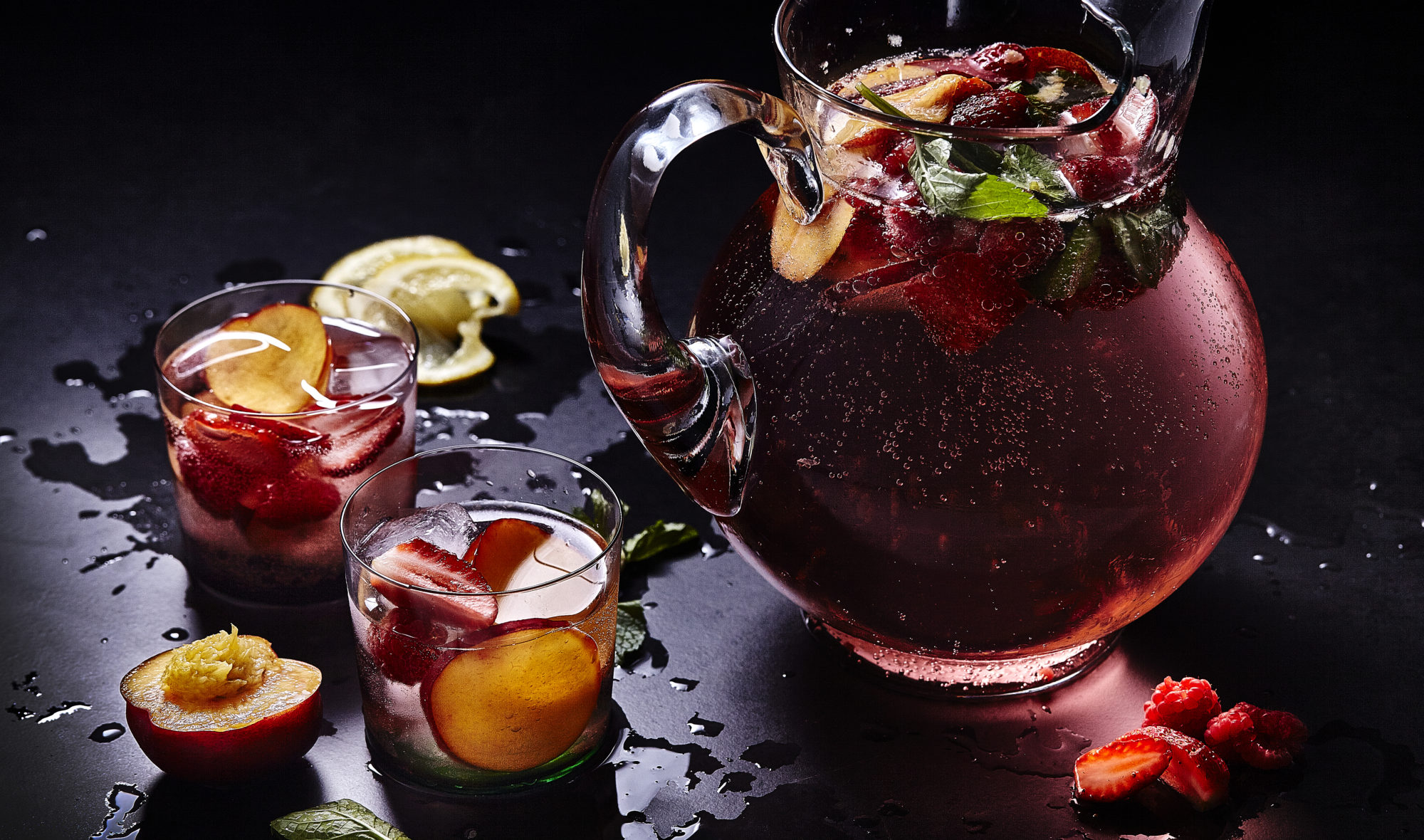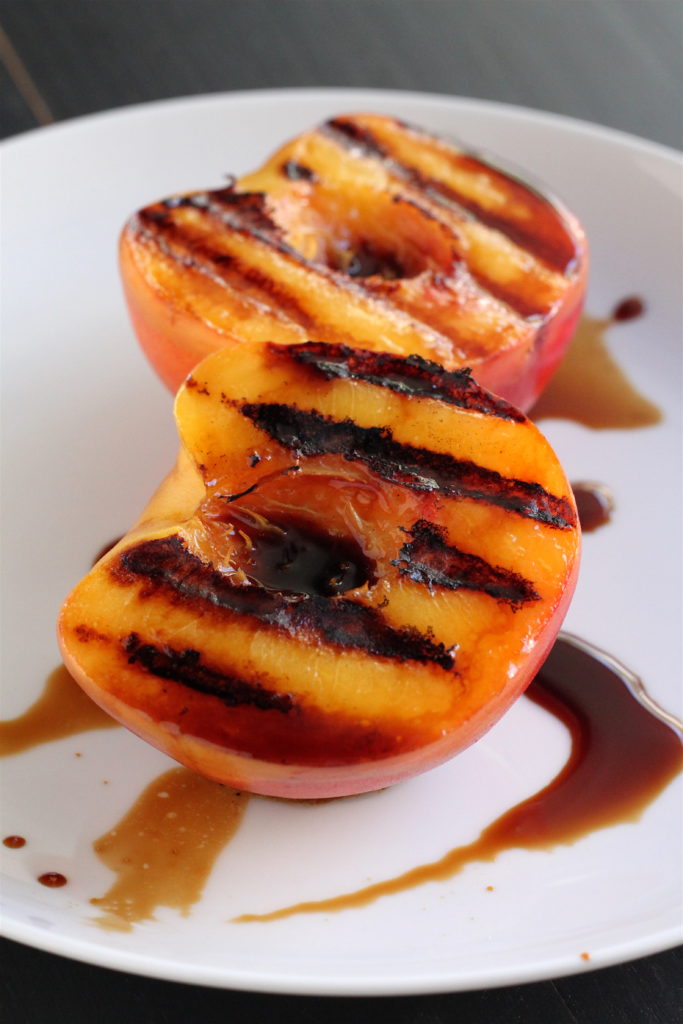Nectarines


The nectarine is a close sibling of the peach. The best way to think of the difference between a peach and a nectarine is to think of them as two siblings from the same parents. Peaches and nectarines are the same species (Prunus persica), but, much like how one sibling can be born with blue eyes and the other sibling can be born with brown eyes, offspring from Prunus persica can be either fuzzy or fuzz-less. Like peaches, nectarines can be classified as either yellow or white, and clingstone (pit is fused to the fruit) or freestone (pit separates easily from the fruit). When ripe, they are also fantastically juicy, sweet, and fragrant. Nutritionally, nectarines are a good source of potassium and beta-carotene. Culinarily, they are a good source of deliciousness.
The nectarine is a close sibling of the peach. The only difference is that nectarines have smooth skin, and peaches have fuzzy skin.
The best way to think of the difference between a peach and a nectarine is to think of them as two siblings from the same parents.
Peaches and nectarines are actually the same species (Prunus persica). But, much like how one sibling can be born with blue eyes and the other sibling can be born with brown eyes, offspring from Prunus persica can be either fuzzy or fuzz-less.
The skin of a nectarine results from the expression of a recessive allele that codes for smooth skin, while the skin of a peach results from the expression of a dominant allele that codes for fuzzy skin. A nectarine tree usually bears nectarines, and a peach tree usually bears peaches, but occasionally you can find a peach growing on a nectarine tree, or a nectarine growing on a peach tree. Nature is tricky like that.
Like peaches, nectarines can be classified as either yellow or white, and clingstone (pit is fused to the fruit) or freestone (pit separates easily from the fruit).
Nectarines and peaches are related to roses, almonds, and other stone fruits including apricots, plums, and cherries. These plants are revered almost as much for their beautiful blossoms as for their delicious fruit.
Nectarines are thought to have originated in China, which is also the world’s largest producer of peaches and nectarines.
A nectarine looks like a peach that has just had a close shave.
Smooth and fuzz-free, nectarines have the same juicy, sweet, punchy flavor of peaches. When ripe, their aroma is similarly intoxicating.
Yellow nectarines have golden yellow flesh and skin that looks like a sunset. White nectarines have pale, nearly white flesh and a pinkish-red blushing skin. White nectarines tend to be sweeter, while yellow nectarines more tangy.
When they are ripe, nectarines are incredibly tender and can be prone to bruising. At peak ripeness, they are the least portable, but also the most tasty.
One medium nectarine (about 142g) has 62 calories, 1.5g protein, 0.5g of fat, 15g of carbohydrates, 2.4g fiber, and 11.2g sugar. Nectarines are a good source of potassium and beta-carotene.
In North America, nectarines are in peak season in mid-late summer. This is also when they are the tastiest, because they are more likely to be tree-ripened rather than imported and ripened off the tree.
Choose nectarines with glossy, deeply colored, and unblemished skin. A ripe nectarine will smell sweet and aromatic, and will yield slightly to a gentle squeeze. Avoid specimens that have bruises, dents, or mushy spots.
If you have purchased under-ripe nectarines, store them at room temperature for several days until they soften slightly and become fragrant. If you have purchased nectarines at peak ripeness, store them in the fridge for up to five days. Alternatively, you can also pit them and slice them and store them in an airtight container in the freezer for up to six months.
Lucky you! A ripe nectarine needs only a quick wash before it can be bitten into and enjoyed as-is.
This sweet and iconically summer fruit needs no further accompaniment, although it does go well topped over oatmeal, blended into smoothies, chopped into salads, or baked into muffins, crumbles, or pies.

When Summer comes around, there’s nothing quite like a grilled piece of fruit! It brings out the sweetness while quenching your thirst all in one. Try these grilled nectarines at your next BBQ!
Prep Time: 5 minutes Cook Time: 5 minutes Yield: 4 nectarines
Preheat your grill to medium – whether an indoor grill plate or outdoor grill.
Next, in a small bowl, combine the balsamic vinegar, honey, and cinnamon and stir until fully blended.
Wash and cut each nectarine in half, remove the pit
Brush the balsamic / honey mixture onto the flesh side of the cut nectarine and place flesh side down on the preheated grill.
Grill for a few minutes until the nectarine feels softer when poked – careful not to burn the nectarine. Outdoor grills will cook the nectarines faster.
Serve – with or without optional topping.
Enjoy!
Precision Nutrition’s Encyclopedia of Food expands every single month as we highlight new foods and showcase beautiful food photography. If you’d like to stay up to date, simply click this link. From there, we’ll send you a FREE copy of our recipe book. We’ll also let you know when new and delicious foods are added to the site.
The nectarine is a close sibling of the peach. The best way to think of the difference between a peach and a nectarine is to think of them as two siblings from the same parents. Peaches and nectarines are the same species (Prunus persica), but, much like how one sibling can be born with blue eyes and the other sibling can be born with brown eyes, offspring from Prunus persica can be either fuzzy or fuzz-less. Like peaches, nectarines can be classified as either yellow or white, and clingstone (pit is fused to the fruit) or freestone (pit separates easily from the fruit). When ripe, they are also fantastically juicy, sweet, and fragrant. Nutritionally, nectarines are a good source of potassium and beta-carotene. Culinarily, they are a good source of deliciousness.